
Cortina de Hierro –Castro’s Iron Curtain
By Eric Armit
PhilBoxing.com
Thu, 28 Jan 2021
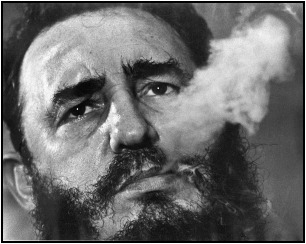
The late Cuban strongman Fidel Castro.
In 1946 after the end of the Second World War what Winston Churchill described as an Iron Curtain stretched across Europe separating East and West with all professional sport banned. That change brought an end to many fledgling careers and any future hopes of a turning professional for boxers on the Eastern side of the Curtain. After just over forty years with the dissolution of the USSR the Curtain is no longer a barrier to professionalism and fighters such as the Klitschko brothers and Vasyl Lomachenko have since graced our sport.
In 1961 after Fidel Castro adopted Communism as Cuba’s creed, another Iron Curtain banning professional sport was woven in the West every bit as important for boxing as the one in Europe. Unlike the European Curtain, this one is still in place and still denying professional boxing access to the wellspring of talent that has made Cuba the most successful nation in amateur boxing.
After a shaky start, boxing was beginning to find its feet in Cuba. The first professional fight in Cuba took place in 1909 and the first boxing gymnasium was opened there in 1910. Unfortunately there followed a period of racial violence on the streets of Havana and this was blamed on boxing. As a result boxing had to become a clandestine sport and remained so until it was legitimised again in 1921.
Despite that ban the biggest fight in Cuban boxing history took place in Havana in April 1915 when Jess Willard knocked out Jack Johnson to win the world heavyweight title.
For many years the bouts in Cuba tended to be staged for tourists with imported fighters from the USA the main attraction. By the 1930’s a national boxing academy had been formed and Golden Glove competitions had started.
Development was slow. Eligio “Kid Chocolate” Sardinas became Cuba’s first world champion when he won recognition as Junior Lightweight champion in 1931. He was also recognised as featherweight champion by the New York State Athletic Commission (NYSCA) and in those days the NYSCA was highly influential as to whether a fighter could legitimately claim to be a world champion. The Kid’s nickname was the amusing “Chocolate Bon Bon” but he was probably next to Jose Napoles the greatest boxer the island has produced. He lost just 10 of 152 fights in an eleven year career. In 1931 he lost to Tony Canzoneri on a split decision for the world lightweight and junior welterweight titles and as Chocolate was already recognised as featherweight champion by the NYSAC and a win would make him a three division champion. Chocolate weighed 127 ½ lbs and Canzoneri 132lbs and if Canzoneri had weighed 130lbs that would have put Chocolate’s Junior lightweight title on the line and as a former featherweight champion by beating Chocolate, Canzoneri would have been boxing first four-division champion.
The Second World War hit the US economy and had a knock-on effect on Cuba with very little boxing at any level. It was in May 1951 before Cuba again had a world champion in the form of Gerardo Gonzalez better known as “Kid Gavilan “The Cuban Hawk”. Gavilan won National Boxing Association and NYSAC recognition as welterweight champion by beating Johnny Bratton for the vacant title. Europe recognised Charles Humez but the Frenchman moved up to middleweight and Gavilan beat Billy Graham in October 1951 to achieve full recognition. Gavilan’s February 1952 title defence against Bobby Dykes in Miami was reported as being the first mixed-race fight in Florida’s history. Gavilan lost in a challenge for the middleweight title on a majority decision against Bobo Olson in April 1954 and then lost his welterweight title to Johnny Saxton in October. With mobster Blinky Palermo having a piece of Saxton it was being said that Gavilan would have to score a knockout to win. Twenty of twenty-two newspapers had Gavilan winning but Saxton took a close decision in a stinking fight.
Just as the mob was moving in on boxing in the USA it was also moving in on Cuba in more than just boxing. Under the umbrella of President Fulgencio Batista the mob controlled the casino’s, prostitution, money laundering and through those much of the Cuban economy.
When the little known Fidel Castro formed his 26th July Movement in 1953 neither Batista nor the mob saw them as a serious threat but despite periodic set-backs the movement grew in popularity until they finally ousted Batista in December 1958.
There was no immediate effect on sport in general or on boxing. There were some good Cuban fighters such as Oscar Suarez who lost to Pascual Perez for the world flyweight title in 1956, heavyweight Nino Valdes who beat Ezzard Charles, Mike De John and Pat McMurty and was the nemesis of British boxing beating Don Cockell, Dick Richardson, Joe Erskine and Brian London. Valdes was rated No 1 in the Ring Magazine annual ratings in 1953 and 1954 but never landed a title shot. Orlando Zulueta made an unsuccessful challenge for the lightweight title in 1957 losing to Joe Brown and Isaac Logart fought every welterweight of note in the 1950’s and the closest he came to a title fight was a loss against Virgil Akins in an eliminator in 1958. Cuba produced its third world champion in May 1960 when the ill-fated Benny “Kid” Paret decisioned Don Jordan for the welterweight title. Paret lost the title to Emile Griffith in April 1961 but regained it by taking a split decision over Griffith in September 1961. In December he took a savage beating in losing on a tenth round kayo against Gene Fullmer for the NBA version of the middle weight title and had his third fight with Griffith in March 1962. A brutal fight saw Paret unconscious on the floor in the twelfth round. He was in a coma and never recovered and died in hospital ten days later. From the mid/late 1950’s there was an explosion of boxing in Cuba. The amateur boxing programme included literally thousands of young boxers and was beginning to produce some exciting talent. There were five or six shows a month there with national titles hotly contested and local fighters starting to replace imports.
That all came to an end in 1961 when Castro copied the Soviet Union and banned all professional sport. Some of the top local prospects saw how the wind was blowing and packed their bags and got out whilst it was possible to do so but most boxers were stuck in Cuba and their boxing careers came to an end.
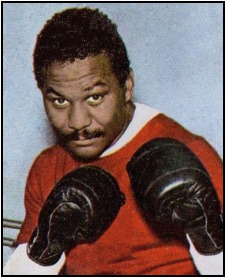
Cuban welterweight great Jose Napoles.
That late 50’s and early 60’s period gave birth to the boxing careers of some Cuban all-time greats. Jose Napoles was 21 with a 20-1 record when he escaped to Mexico on his way to becoming one of the greatest ever welterweights. Sugar Ramos was 19 and 25-0-1 before he decamped to Mexico and won the WBA and WBC featherweight titles in March 1963. My own favourite Luis Manuel Rodriguez won his first 20 fights in Cuba but luckily had already largely moved his base Florida in 1959 at the age of 21, and he went on to win the welterweight title. Jose Legra was just 17 and an unimpressive 9-1-1 when he moved his base to Mexico but went on to win the WBC and European featherweight titles and took Spanish citizenship. Doug Vailant and Florentino Fernandez had already based themselves in Florida. Vailant floored Dave Charnley twice and outpointed him but lost to Carlos Ortiz in a challenge for the WBA and WBC lightweight titles. Once seen never forgotten “The Ox” Fernandez was a throw-back ferocious slugger. He had won his first 21 fights in Cuba and had won the last 15 by KO/TKO before spreading his wings. A great puncher with poor defence, he eventually faltered against better opposition. He lost a split decision to Gene Fullmer in 1961 for the NBA version of the middleweight title a fight in which Fullmer suffered a fractured elbow. Fernandez fought on beating guys such as future light heavyweight champion Jose Torres, flooring Torres twice and stopping him in five rounds, Phil Moyer, Joe DeNucci, Rory Calhoun and Marcel Pigou. These few plus fighters such as Jose Stable, who challenged Emile Griffith for the welterweight title in 1965, and Angel Robinson Garcia who travelled the world fitting 239 fights into a 23-year career, were the very few who escaped from behind the Castro’s Curtain and since 1961 escapes have been a trickle at best.
For those who did not escape or chose to stay the picture differed greatly. In his excellent book “Hard Leather: A History of Cuban Boxing” author Enrique Encinosa reported:
“Some resisted, joining in a civil war struggle that stretched for half a decade of irregular warfare. Lightweight prospect Jose Acosta –a butcher by trade- and veteran Tony Armenteros died executed by Castro firing squads; welterweight Marcelino Gonzalez was captured while fighting guerrilla warfare against Castro and was sentenced to a long stretch in a Castro prison. Featherweight contender Pupi Garcia –in line for a fight with Hogan Kid Bassey- and prospect William Roncourt also were sentenced to stretches in Castro’s dungeons, accused of being involved with urban resistance groups. Johnny Sarduy and Pedro “Hueso” Gonzalez, hung up their gloves to fight with rifles in the ill fated CIA sponsored Bay of Pigs invasion of 1961. Featherweight Enrique Lamelas fought in the resistance movement and was able to leave the island without facing a firing squad.“
A whole generation of Cuban boxers has largely been lost to professional boxing. Between 1968 when Legra won the WBC featherweight title and 1998 when Juan Carlos Gomez won the IBF cruiserweight title not a single new Cuban boxer had won a version of a world title. Thirty years during which Cuba invested big money in building a system designed to produce the best amateur boxers in the world and they have largely succeeded.
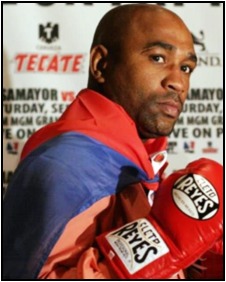
Joel Casamayor.
A few have slipped through the curtain escaping at great risk from Cuba itself or defecting when part of a Cuban boxing team competing outside the country. Joel Casamayor slipped through the net in 1995. He had won a gold medal at the Olympic Games in 1992 beating Wayne McCullough in the final and a silver medal at the 1993 World Championships. He won the secondary WBA super feather title in 2000 and the WBC lightweight title in 2006 but retired after losing to Tim Bradley in 2011 for the WBO super light title. Diosbelys Hurtado slipped through the curtain and very much under the radar. He won the Cuban national title in 1993 beating Mario Kindelan but never lifted an international title. He started his pro journey at the end of 1994, He lost to Pernell Whittaker for the WBC lightweight title, to Kostya Tszyu for the interim WBC super light title and but won the secondary WBA super light title in 2002 before losing it later the same year to Vivian Harris and retiring in 2011.
In December 2006 Yan Barthelemy, Yuriorkis Gamboa and Odlanier Solis defected from the Cuban National team as it was competing in Venezuela. Barthelemy had won a gold medal at the 2004 Olympics but he made no impression as a professional, Gamboa had won gold medals at the Olympics, the World Championships, the Pan American Games and the World Cup so his defection was a blow to the Cuban team. As a professional he has won the WBA and IBF featherweight titles but since being stripped of the titles in 2011 has really just been a bit player on the world stage.
Heavyweight Solis looked a very attractive prospect for professional boxing. He had won gold medals at the 2001, 2003 and 2005 World Championships the 2004 Olympic Games and the 1999 and 2003 Pan American Games beating David Haye and Kubrat Pulev and twice scoring wins over Cuban great Felix Savon. He had fought mostly at 91kg (200lbs) as an amateur but in his first professional fight, although just 6’1 ½”, he weighed 258 ½ lbs (117kg) and never seemed to be able to control his weight after that. He challenged Vitali Klitschko for the WBC heavy title in 2011 but was stopped in the first round. He last fought in 2016.
The trickle has continued with Yoan Pablo Hernandez winning the IBF cruiser title in 2011, Richard Abril the WBA lightweight title in 2013, Rances Barthelemy, the younger brother of Yan, winning the IBF super feather title in 2014. Erislandy Lara won the super welterweight title in 2014. He and Guillermo Rigondeaux defected from the Cuban team during the 2007 Pan American Games in Brazil and were said to be turning pro but they were both held in custody for overstaying their visa and sent back to Cuba. Lara subsequently escaped in a speed boat to Mexico and Rigondeaux followed him in 2009 being spirited out in a less glamorous smuggler’s boat. Rigondeaux, one of the most successful amateurs in Cuban boxing being a two-time Olympic champion, twice World Champion, twice World Cup gold medalist and Pan American Games champion won the secondary WBA super bantamweight title in 2012 upgraded to full champion in 2013. Yuniel Dorticos is Cuba’s most recent world title winner having won the WBA secondary title in 2017 but then collecting the IBF title in 2019.
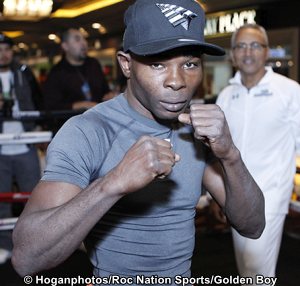
Guillermo Rigondeaux.
There are of course differences in tactics and styles that are required to succeed in “amateur” boxing. The number of rounds requires a different approach to that of a ten or twelve round pro fight and where when representing your country winning is everything and entertainment is nothing. Rigondeaux is one of the most brilliant defensive fighters in the world but he has not adapted to the need to also entertain.
Things have changed ever since the time when Rigondeaux was an amateur and boxers everywhere including Cuba are given the freedom to express themselves and be individualistic, There is no guarantee that amateur success will translate into professional achievement but a large percentage of title holders today such as Anthony Joshua, Artur Beterbiev, Gennady Golovkin, Errol Spence, Josh Taylor, Jose Carlos Ramirez, Jamal Herring and Nordine Oubaali are all the product of Olympic boxing and have gone on to improve and succeed as professionals and only Joshua among those above won an Olympic gold medal.
As I said earlier there are different styles and tactics to succeeding as a professional but who is to say that the boxer produced by the Cuban system would not have had every bit as much success as those current champions.
We will never know how Teofilo Stevenson (3 Olympic gold, 2 World Championships gold, 2 Pan American gold), Felix Savon (3 Olympic gold, 5 World Championships gold, 3 Pan American gold) would have developed as professionals. There is no reason to suppose they would have been less successful than the Klitschko brothers. How would Luis Ortiz have performed if he had not had to wait until he was almost 31 before being able to turn pro?
Rolando Garbey was one of the first Cuban’s to win an Olympic medal when he took silver at the Games in 1968 and also a gold medal at the World Championships and gold at the 1967, 1971 and 1975 Pan American Games what would he achieved if he had turner professional? How about Angel Herrera double Olympic and double World Champion or Adolfo Horta triple World Champion and double PanAmerican Champion or Hector Vinent another double Olympic and double World Championships gold medallist would they have succeeded as pros?
There are a few Cubans active in the professional ranks right now we have recent escapees Robeisy Ramirez (a double Olympic gold medal winner who beat Michael Conlan and Shakur Stevenson), Joahnys Argilagos (a double World Championships gold medal winner), unbeaten heavyweights Frank Sanchez (17-0), Jose Larduet (5-0 Cuban National Champion) and Lenier Pero (4-0 Pan American Games gold medalist in 2011 and 2015), David Morell the holder of the WBA secondary title at super middleweight who won the interim title in his third fight, super middleweight William Skull (15-0), super feather Pablo Vicente (16-1) all relatively recent escapees.
Despite having some of their best boxers jump ship Cuba still has one of the most powerful teams in amateur boxing. I would have loved to see what Roniel Iglesias could do in the profession ranks. He won the Cuban National title in 2005 at 56kg when just 16. He has won gold medals at the Olympic Games, World Championships and twice at the Pan American Games. The second Pan American gold came in 2019 fourteen years after he won that first Cuban title but at 32 he is passed his peak. Lazaro Alvarez won a silver medal at the World Cadet Championships in 2007 and has gone on to win gold medals at the World Championships in 2011, 2013, 2015 and 2019 but is 29 now and Julio Cesar La Cruz has won an Olympic title, gold at the World Championships in 2013, 2015, 2017 and 2019 and at the Pan American Games in 2011, 2015 and 2017 but is 31 as is Erislandy Savon, the nephew of the great Felix Savon, Erislandy is a three-time world Champion. It is not too late for Yosvany Veitia, 28, a World Championship winner who scored two victories over Naoya Inoue, Arlen Lopez 27 an Olympic, World and Pan American champion or 25-year-old Andy Cruz a double world and double Pan American champion but I fear that as things stand they will not be able to or allowed to enter the professional ranks. It took 43 years for the Iron Curtain to be pulled open in Europe but Castor’s Iron Curtain is still firmly in place after 59 years and professional boxing continues to pay the price in the shape of the lost talent. In retrospect Castro’s “Curtain” could arguably be the most damaging blow professional boxing has suffered in its history.
About the Author
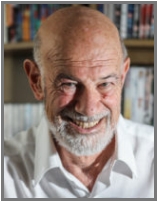
Born in Scotland, Eric Armit started working with Boxing News magazine in the UK in the late 1960’s initially doing records for their Boxing News Annual and compiling World, European and Commonwealth ratings for the magazine. He wrote his first feature article for Boxing News in 1973 and wrote a “World Scene” weekly column for the magazine from the late 1970’s until 2004. Armit wrote a monthly column for Boxing Digest in the USA and contributed pieces to magazines in Mexico, Italy, Australia, Spain, Argentina and other countries. Armit now writes a Weekly Report covering every major fight around the world and a bi-weekly Snips & Snipes column plus occasional general interest articles with these being taken up by boxing sites around the world. He was a member of the inaugural WBC Ratings Committee and a technical advisor to the EBU Ratings Committee and was consulted by John McCain’s research team when they were drafting the Ali Act. He is a Director and former Chairman of the Commonwealth Boxing Council. Armit has been nominated to the International Boxing Hall of Fame the past two years (2019 and 2020) to which he said, “Being on the list is an unbelievably huge honour.”
Click here to view a list of other articles written by Eric Armit.
Recent PhilBoxing.com In-House articles:
Mangin is rising star in PH taekwondo
By Lito delos Reyes, Tue, 09 Dec 2025CHICKEN RANCH CASINO RESORT BACKS DECEMBER 13 NIGHT IN STOCKTON
Tue, 09 Dec 2025Brackets Set for 2025 USA Boxing National Championships in Lubbock
Tue, 09 Dec 2025Petecio, Bautista, 4 others see action in SEAG on Dec. 10
By Lito delos Reyes, Tue, 09 Dec 2025TRAINING CAMP NOTES: Super Welterweight Yoenis Tellez Ready for Redemption Bout vs. Kendo Castaneda on December 13
Tue, 09 Dec 2025Hot prospect Marco Romero Prepared to close 2025 in style
Tue, 09 Dec 2025PH favored in SEA Games triathlon
By Lito delos Reyes, Tue, 09 Dec 2025Tamayo settles to a draw in Japan
By Lito delos Reyes, Mon, 08 Dec 2025Apolinar fails in WBO Asia Pacific title bid
By Lito delos Reyes, Mon, 08 Dec 2025Biendima loses by UD
By Lito delos Reyes, Mon, 08 Dec 2025OLYMPIC BOXING 6: 1932 OLYMPICS AT LOS ANGELES, CALIFORNIA, UNITED STATES
By Maloney L. Samaco, Mon, 08 Dec 2025MONTE-CARLO SHOWDOWN VI FIGHT NIGHT RESULTS AS MASOUD BEATS McGRAIL
Sun, 07 Dec 2025Pitbull Cruz and Lamont Roach Battle to Controversial Majority Draw in High-Intensity Title Clash
Sun, 07 Dec 2025Boxing, Mixed Martial Arts and Ju-jitsu in Thailand SEA Games
By Lito delos Reyes, Sat, 06 Dec 2025Mapua, IIEE Singapore and IM Concio wins the 7th IIEE ANC Cup co-awarded by GM Torre
By Marlon Bernardino, Sat, 06 Dec 2025





